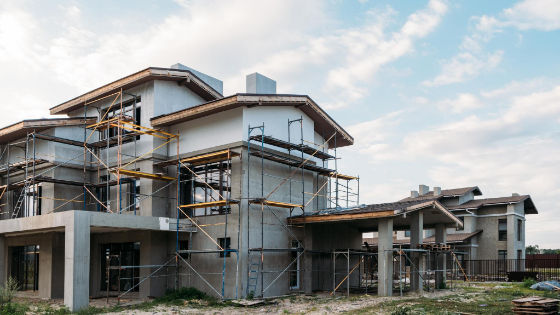How Borrowers Benefit from One-Time Close Construction Loan
- Lakeview Mortgage Bankers

- Aug 18, 2022
- 3 min read

Some home builders are finding it simpler to secure the funding needed to construct homes, but others encourage their customers to take out construction loans.
Because the loan automatically converts to permanent financing once the house is done, this kind of single-close financing is known as a construction-to-permanent loan.
In addition to their permanent or take-out financing, consumers who want to build a custom house have other unique possibilities for acquiring interim construction financing.
Consumers typically get interim construction financing from a bank or credit union to finance their new home.
Once the house is finished, the borrower repays the construction loan with a subsequent, 30-year permanent loan, typically from a mortgage company. “Two-time close” is the term used to describe this procedure.
Although this strategy has been successful for many years, circumstances have changed. Before making a choice, consumers looking for financing for a custom house should carefully examine the new generation of hybrid construction to permanent loan programs.
This article lists various benefits for consumers of single-close construction to permanent loans.

Your Borrowers Will Have to Qualify Just Once
For your borrowers, gathering all required paperwork (pay stubs, W2s, tax returns, bank statements, photo IDs) and signing loan disclosures takes time, is complicated, and is ineffective.
A traditional two-time close construction loan necessitates that a borrower qualifies not twice but three times: once for the construction loan, once for the permanent “take-out” loan to demonstrate their ability to repay the construction loan.
There’s also one more a year later when the house is actually finished since the original paperwork and approval have all since expired. A single-close construction to permanent loan only requires this stage to be finished once.
One-Time Qualification Process Reduces Borrowers’ Risk
A one-time qualification procedure is not only more convenient for the borrower, but it also helps them manage risk.
A two-time close deal carries some risk for the borrower because they will need to reapply for the “take-out” loan once the house is done.
The borrower would be unable to repay the construction loan at maturity and might be pushed into a loan workout or perhaps lose the house in a foreclosure proceeding if this qualification failed to materialize for any reason.
A construction credit with a one-time closing eliminates this risk factor.
Fixed Interest Rates
An SC CTP loan has a predetermined interest rate for the duration of construction as well as a predetermined interest rate for the permanent loan that will replace the construction loan after the borrower closes the loan. No surprises exist. Not the case with a construction loan with two closes.
Typically, an interest rate for construction that is two times close is changeable. The permanent “take-out” loan’s interest rate won’t be decided upon until the building is finished, which typically takes a year.
In a year, there might be significant changes in interest rates, and the consumer runs the risk of not being eligible for a higher rate.
Lower Closing Expenses
Mortgage loan closing expenses, which typically account for 3% to 4% of the loan amount, can be a considerable expense for the borrower. By combining two loans into one, the borrower may save thousands of dollars.
These savings can subsequently be used to pay for items typically not included in the construction cost, such as landscaping, furniture, window coverings, or utility deposits.
Single-Appraisal Valuation Prevents Uncertainties
A typical two-time close construction loan will necessitate two separate evaluations, the cost of both of which will fall on the borrower. When the house is finished, often a year later, the first is completed for the construction loan, and the second is completed for the take-out loan.
Conclusion
The loan-to-value ratio is calculated to establish the maximum loan amount. The borrower will be required to pay the difference in cash if the value determined by the second appraisal is lower than the value determined by the first.
Usually, just one assessment is necessary to close a one-time close construction loan. There won’t be any unpleasant shocks after the house is built.

Get the best mortgage deals with Lakeview Mortgage Bankers! We’re a premier mortgage team based out of Massapequa, New York. Choose among the straightforward mortgages we offer today.





Comments